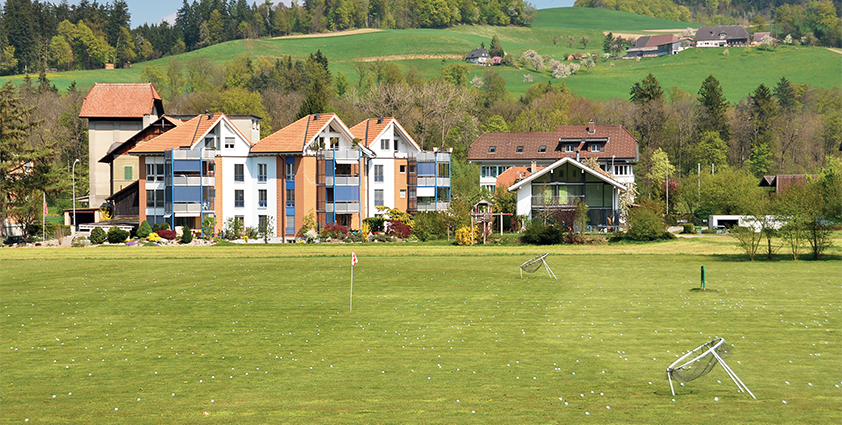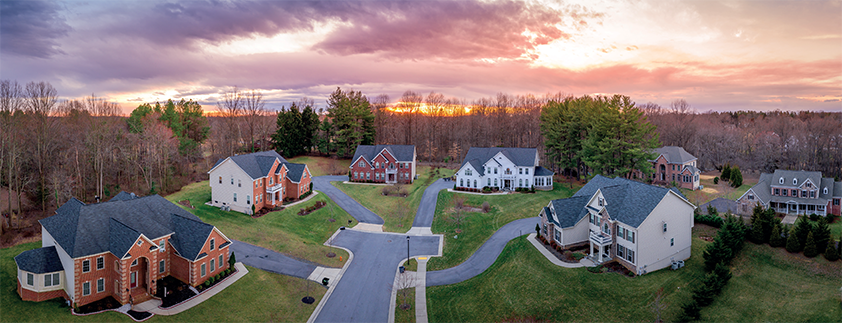
Developer beware
With the inventory of raw land dwindling in many communities, many developers are considering stepping into the world of environmentally-impacted properties. Whether former golf-courses, agricultural properties, or former industrial uses, the redevelopment of these types of properties raise a new set of developmental hurdles to consider. These properties often carry with them a unique and complex history, making their conversion and development a trap for those unaware of or unprepared for the myriad of land use, environmental, liability and public relations issues that certainly lie ahead. This article will highlight some of the primary obstacles for landowners, developers and contractors considering converting environmentally-impacted properties into new development.
Land use issues
In most communities, environmentally-impacted properties such as golf courses, agricultural land, or industrial sites require rezoning prior to redevelopment. This carries with it the typical land-use-change obstacles of neighborhood opposition, reassessment of impacts, and compatibility analysis. A conversion of an environmentally-impacted site, however, carries with it an extra layer of angst. Take golf courses, for example. Many developments were created with a golf course centerpiece. Many lots were sold with boasts of golf-course views. Many neighbors will feel a sense of possessiveness towards the golf course as if its continued existence is a matter of right. Some local governments have even carried that concept into law, creating substantial burdens and restrictions upon those seeking to convert a golf course.
So, what is a developer to do? Many of these historical uses such as golf courses have succumbed to the economic challenges of the last few years. Many of those properties have been abandoned, left to sit fallow. Neighbors accustomed to pristine views of well-manicured fairways or open space now stare at weeds, pests and rodents. As between a pristine golf course and a new residential development, who would not want the course? But as between an eyesore and a new residential development, in many cases the balance shifts. While still not an easy road, today’s economic climate may at least result in a developers’ plan being objectively considered.
road, today’s economic climate may at least result in a developers’ plan being objectively considered.
Environmental issues
Perhaps the single most intimidating issue for those contemplating the conversion of an environmentally-impacted property is the environmental issue. With histories of contamination, and the health hazards associated with that contamination, these properties should be approached with due environmental caution.
Caution should first be exercised in the due diligence phase. Keep in mind that most environmental laws impose liability for contamination on anyone in the chain of title. Therefore, it is important to know what the environmental condition of the property is before you buy it. Second, many jurisdictions impose a duty to report contamination on the owner or operator of a property. As a prospective purchaser, it is unlikely that you would be considered either. As such, you have a limited look-see opportunity before you find yourself not only in the chain of title but with a corresponding duty to report.
If contamination is found, potentialliability must be analyzed not just for the assessment and any required remediation of the contamination, but also for potential liability to residential home buyers, users of the amenities, and potentially to adjacent landowners whose property may be affected by any contamination originating from the site.
But there is some good news. Advanced soil management techniques including soil blending and capping, risk-based tools to address soil and groundwater contamination, and a myriad of institutional controls which may include deed restrictions to reduce or prevent human exposure to the contaminants can all be used not only to address but even resolve the contamination. In many instances, the use of these tools can result in the property receiving the environmental equivalent of a clean bill of health. It is imperative, however, to find environmental, engineering and construction professionals knowledgeable about and experienced in golf course projects to maximize your chances of success and minimize the costs associated with achieving that success.
Construction costs
The preceding discussion has highlighted some of the additional concerns related to the conversion of environmentally-impacted properties to new uses, and those additional concerns come at a cost. In pricing these projects, it is important to consider and budget for non-traditional items such as additional public zoning hearings, disposal costs for any contaminated soils required to be removed, additional clean fill if needed to cover or cap remaining contaminated soils, specialized dewatering in the event of contaminated groundwater, and the professional fees associated with managing the increased land use and environmental compliance issues.
The good news is that these projects are typically on prized pieces of land and in high-demand areas. Even with the increased costs associated with these concerns, many developers find the success of these projects to be worth the cost.
Public relations
A brief word of caution: don’t be caught flat-footed on the public relations front. Contamination. Hazardous substances. Cancer. These are very bad words to be associated with new development. You must, therefore, manage the process. This starts by knowing the condition of the property before you begin. Making sure you follow the process is key, so hire strong and experienced compliance professionals, make sure the regulators and public officials are kept in the loop and their requirements satisfied at every stage. Keep the neighbors informed. Remember, the continued use of the property as is may well mean the continued legal use or generation of contaminants. To convert the property into a new use may well stop that practice.
Conclusion
Overcoming common obstacles takes preparation along with the right tools and the guidance of experienced professionals. A successful conversion is dependent upon identifying the traps so they can be avoided. As more developers consider environmentally-impacted properties as targets for new development, the issues that can be the downfall for the unwary can give the knowledgeable developer a significant advantage.
 Dawn Meyers is Berger Singerman’s Government and Regulatory Team Manager. Berger Singerman LLP, Florida’s business law firm, has more than 90 attorneys working out of offices in Fort Lauderdale, Miami, Tallahassee, and West Palm Beach. Members of the firm have expertise in commercial law, including business reorganization, corporate securities and M&A, dispute resolution, construction, intellectual property, employment law, real estate, environmental and land use, government and regulatory, healthcare, insurance, tax, and wealth preservation.
Dawn Meyers is Berger Singerman’s Government and Regulatory Team Manager. Berger Singerman LLP, Florida’s business law firm, has more than 90 attorneys working out of offices in Fort Lauderdale, Miami, Tallahassee, and West Palm Beach. Members of the firm have expertise in commercial law, including business reorganization, corporate securities and M&A, dispute resolution, construction, intellectual property, employment law, real estate, environmental and land use, government and regulatory, healthcare, insurance, tax, and wealth preservation.
www.bergersingerman.com